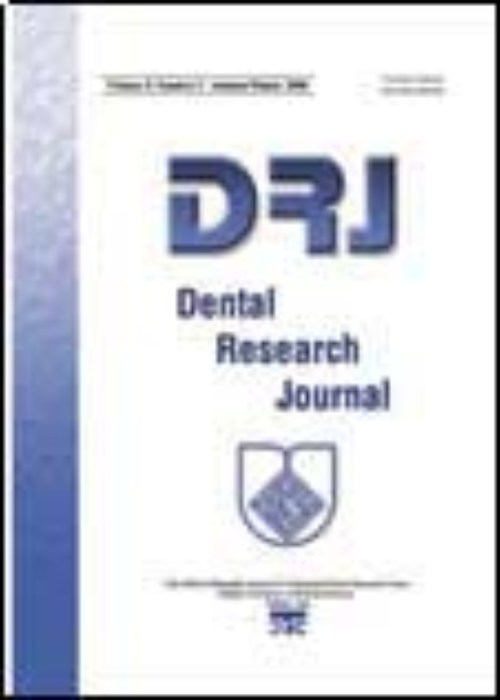Evaluation of surface energy and surface stability and adherence of Candida albicans to octa fluoro pentyl (meth) acrylate‑coated PEEK using plasma spray
Polyetheretherketone (PEEK) has favorable properties that make it able to be used as a denture base material, but it is also susceptible to the adhesion of microorganisms. In this study, we applied Octafluoropentyl (meth) acrylate (OFPA) coating on the PEEK polymer surface by using plasma spray and investigated the functional groups present on the surface, changes in the surface energy and Candida albicans adhesion.
In this experimental study, the samples were placed in a control group without surface preparation and three experimental groups that were subjected to plasma spray for 10, 30, and 60 s and then impregnated with degassed Octa fluoropentyl (meth) acrylate (Sigma‑Aldrich, USA) monomer. Fourier transform infrared spectroscopy (FTIR) was used to identify the functional groups and new chemical bonds between PEEK and OFPA, and Sessile Drop Method was used to evaluate the surface’s wettability. The surface morphology was checked using a LEXT OLS4000 (Olympus®‑Japan) microscope, and the inhibition of C. albicans adhesion was also checked by counting the colonies in terms of colony forming unit/mL (CFU/mL). Kurskal–Wallis analysis was conducted to assess Candida adhesion, while wettability was evaluated using analysis of variance and post hoc analyses. The level of statistical significance was set at P < 0.05.
FTIR analysis confirmed that a chemical between OFPA and PEEK was established. The samples showed a significant increase in the contact angle after 30 s of plasma application (CA = 88.2 ± 7.3). The contact angle decreased again by increasing the surface modification to 60 s (CA = 64.33 ± 5.5). Examining the surface morphology of the samples shows an increase in surface roughness with increasing plasma time up to 60 s. The number of adherent colonies was the lowest in 30 s group, but it was not statistically significant (P = 0.658).
No statistically significant difference in C. albicans CFU/mL count was found between groups. The contact angle of the 30 s group was significantly higher than the control group.
- حق عضویت دریافتی صرف حمایت از نشریات عضو و نگهداری، تکمیل و توسعه مگیران میشود.
- پرداخت حق اشتراک و دانلود مقالات اجازه بازنشر آن در سایر رسانههای چاپی و دیجیتال را به کاربر نمیدهد.


